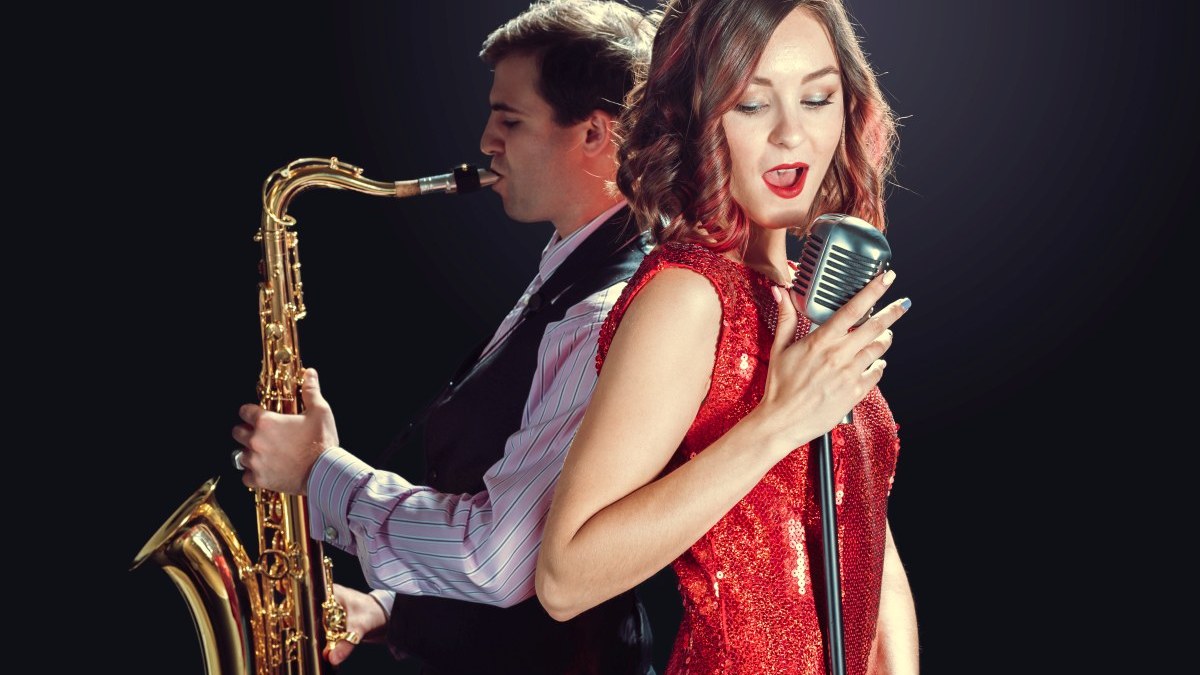
A jazz book isn’t just a book about jazz. It’s a book that has been written with jazz in mind.
I have been part of several jazz sessions, and I have grown to be a jazz fan over time. For sure, the music is genuinely melodic, harmonious, and rhythmic. The sound mixes from various instruments give jazz a unique style. Improvisation is crucial with this kind of music, and the artists or players also need considerable skill.
For those who may not know, jazz came to life in the late 19th and early 20th centuries among the African-American communities. Since its origination, many people have considered jazz an essential form of musical expression in popular and traditional music.
If you are a fan or wish to learn more about jazz this year, below are my top picks of books on jazz.
What Are The Best Book on Jazz?
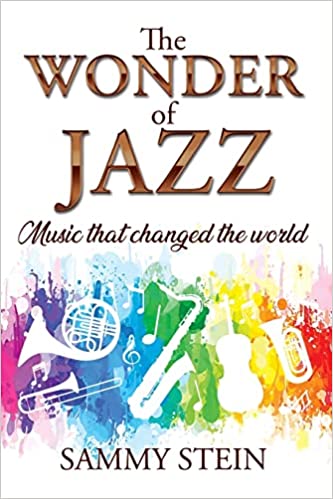
The Wonder of Jazz, by Sammy Stein (2022)
The Wonder of Jazz takes you on a journey of discovery and revelation about jazz with detailed research and input from jazz influencers and audiences. The book features the history, impacts, and influences of jazz music. It is written in a way that will have you feel as if you are in a room with jazz lovers soaking in knowledge and passion. It is an informative and compelling read for jazz novices and future jazz music makers.
It has input from over a hundred musicians and tells readers exactly what jazz is. It also highlights how you know you are listening to jazz. If you do not know much about the origin of jazz, this book has the details. You will also see how jazz links with other music genres and learn about women, writers, and journalists in jazz.
The book further discusses jazz’s social, cultural, and political influence and even talks about areas the music has highly impacted in many ways we do not realize. Jazz has influenced young people and hip hop and has connections with the third stream, classical, and various art forms.
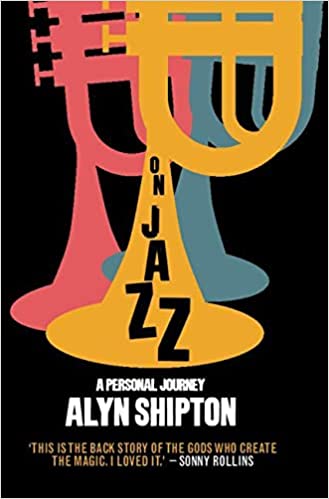
On Jazz: A personal Journey, by Alyn Shipton (2022)
Not many books about jazz give more than just dry facts or theories to relinquish the music’s “essence.” However, On Jazz is different. It is written by one of the most influential and renowned writers on the subject.
Alyn describes his life as a jazz player, observer, and broadcaster with vivid personal contacts, zesty anecdotes, and reminiscences. He recalls his friendships with legendary musicians as he reveals fresh discoveries about various luminaries like Louis Armstrong, Fats Waller, Geri Allen, Abbey Lincoln, Charlie Parker, and Duke Ellington.
This book powerfully evokes clubs and dancehalls atmospheres and takes readers behind the scenes and on the stage of the exhilarating world jazz has spotlighted. Every page contains unmined gemstones about jazz you may not even know.
On Jazz is a personal semi-autobiographical journey with details about the social context and cultural milieu of everything jazz.
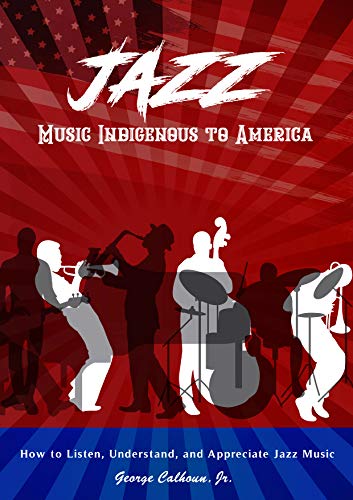
Jazz: Music Indigenous to America, by George Calhoun (2019)
This jazz book introduces music enthusiasts to jazz. Sometimes, people ignore this genre due to enigmatic perceptions, but jazz is much more.
Jazz gives a brief historical perspective about jazz to illustrate its origin in America. For many decades, music lovers all over the world have enjoyed jazz.
This book includes hundreds of obscure, popular, and esoteric Blues, Rag, Smooth, Hard Bop, Swing, Bebop, and free-fusion Jazz recordings and video snippets. These have been put together to introduce and arouse renewed listenership among seasoned jazz enthusiasts and prospective neophytes. This feature will appeal to jazz lovers because the art of listening to jazz is focusing one’s attention on performers to see how each one contributes to the composition.
Many times, listeners wonder who is on which instrument or what they are doing, but this book attempts to answer these questions. The author has included many great performers and performances to leave readers thirsty for more jazz music.
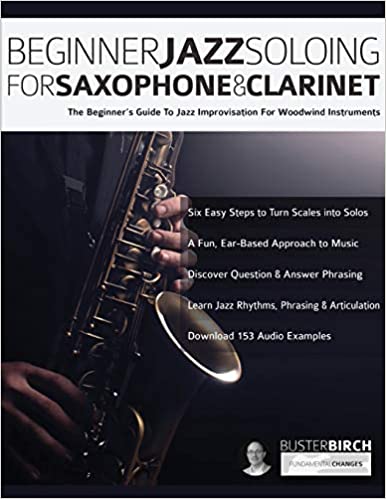
Beginner Jazz Soloing for Saxophone and Clarinet, by Buster Birch (2019)
This book is a must-read if you want to learn how to articulate a saxophone and clarinet techniques to add flair and emotion to your jazz solos. You will discover techniques like ghost notes, slurs, staccato, legato, and more. The book is a great resource for beginners but also has excellent input for experienced players.
Buster has arranged it so that readers are introduced to the ideas slowly but logically to give opportunities for creativity and invention.
Readers discover a systematic guide on how to improvise blues and jazz on saxophone and clarinet and how to master the calls and responses of composition. The method used is easy to conceive and will help you grow your skills and also help you learn how to transpose ideas into different keys.
Once you begin improvising, you can start to play specially written tunes and eventually turn your ideas into songs and compose your tunes.
The exercises featured here have been tested in different jazz workshops with young and adult learners and revealed remarkable results.
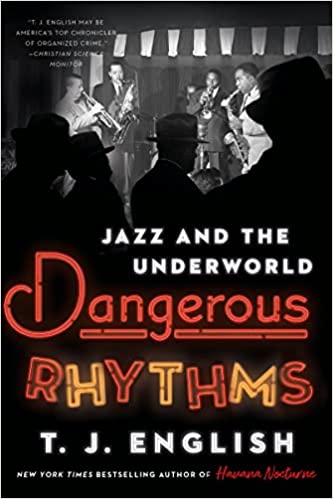
Dangerous Rhythms, by T. J. English (2022)
If you enjoy books about jazz history, you must get your hands on Dangerous Rhythms. The book tells an epic and scintillating narrative about the connection between jazz and crime in 20th-century America. You will find the symbiotic story of the underworld and jazz in some of America’s most notorious vice districts.
For the first half of the 20th century, musicians and mobsters enjoyed a mutually beneficial partnership. Jazz offered musicians like Fats Waller, Louis Armstrong, Duke Ellington, Ella Fitzgerald, Lena Horne, and Billie Holiday a stage. It also gave significant players like Charlie “Lucky” Luciano, Meyer Lansky, and Al Capone opportunities that would otherwise not have existed.
But at the core of this relation was a growing racial inequity. Most of these musicians were African-American and white men owned the clubs and production means. This plantation system was glorified and would eventually get out of tune with an uprising Civil Rights movement. Some artists believed they were safer and would get fair pay by working in “protected” joints, while others thought they would easily have career control by playing in venues outside mob rule.
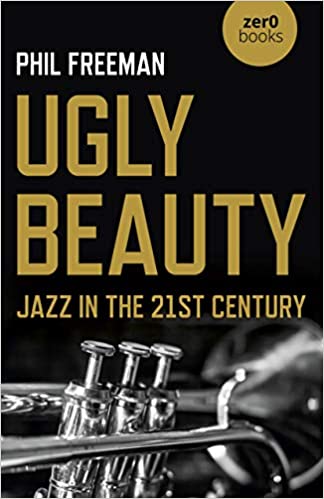
Ugly Beauty, by Philip Freeman (2022)
Ugly Beauty explores what jazz means two decades into the 21st century. Has the streaming culture portrayed music as meaningless due to eliminating all context beyond the playlist? Do fans have any traditions left for exploration? Has the apprenticeship model been destroyed to change music irrevocably, and is it possible that some sounds are off-limits? How far can we go and still refer jazz to as what it is, or should the name just be retired?
These are the questions that are unraveled in this book. Phil gives insights based on his experiences and incorporates input from conversations he has had with present-day players. As the book says, jazz is now more vital than ever and has a significant role in today’s culture, particularly in the UK and US.
In this book, Phil portrays that the jazz scene is fast-moving to give a welcome addition to the growing jazz literature for more awareness.
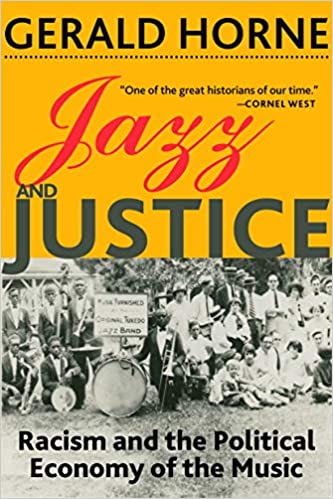
Jazz and Justice, by Gerald Horne (2019)
This is one of the jazz history books that explore how jazz and its musicians flourished regardless of the rampant cultural exploitation.
Jazz arose based on African music traditions and slavery freedom. The genre was grounded in the “blues,” the type of music that black folk used to express suffering, pain, and hope. The music came alive through instruments abandoned by the departing military following the Civil War.
This book examines social, economic, and political forces that shaped jazz to make it a culture, beautiful lotus, and global arts contributor.
Gerald has gathered a galvanic story to depict an era that may have been rampant with virulent racist and economic exploitation. During this time, jazz musicians had to fight organized crime and malignant forces that dominated the nightclub scene. Gerald also pays particular attention to female jazz artists and talks about their contributions.
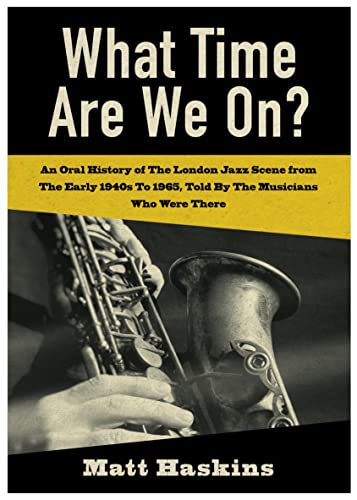
What Time Are We On?, by Matt Haskins (2021)
What Time Are We On is a British jazz tale over two decades after WWII. It is told by nine musicians who have been interviewed in the past years and who were also lucky to have been in the jazz scene then. Some of the interviewees include Chris Barber, who was a trombonist and a band leader, Don Rendell, a saxophonist, John Critchinson, a pianist, and Paul Jones, Manfred Mann’s singer.
Through this book, Matt gives a story about the revival of traditional jazz and how modern British jazz came to be. One of the chapters in the book talks about London jazz clubs that are no longer there.
Readers also get to see early New York negotiations that brought British jazz groups’ touring and Americans’ return to the UK when the MU/AFM trade dispute was on. This jazz contributed to Great Britain’s rhythm and blues and birthed the breakout into today’s popular music.
Final Thoughts on the best Jazz Books
If you are a jazz enthusiast, the books on this list will excite you as you get more insights into the music. The books may also give you a new perspective even if you don’t consider yourself much of a jazz lover. Go ahead and check them out.
Check out also our favorite fiction books about music!
